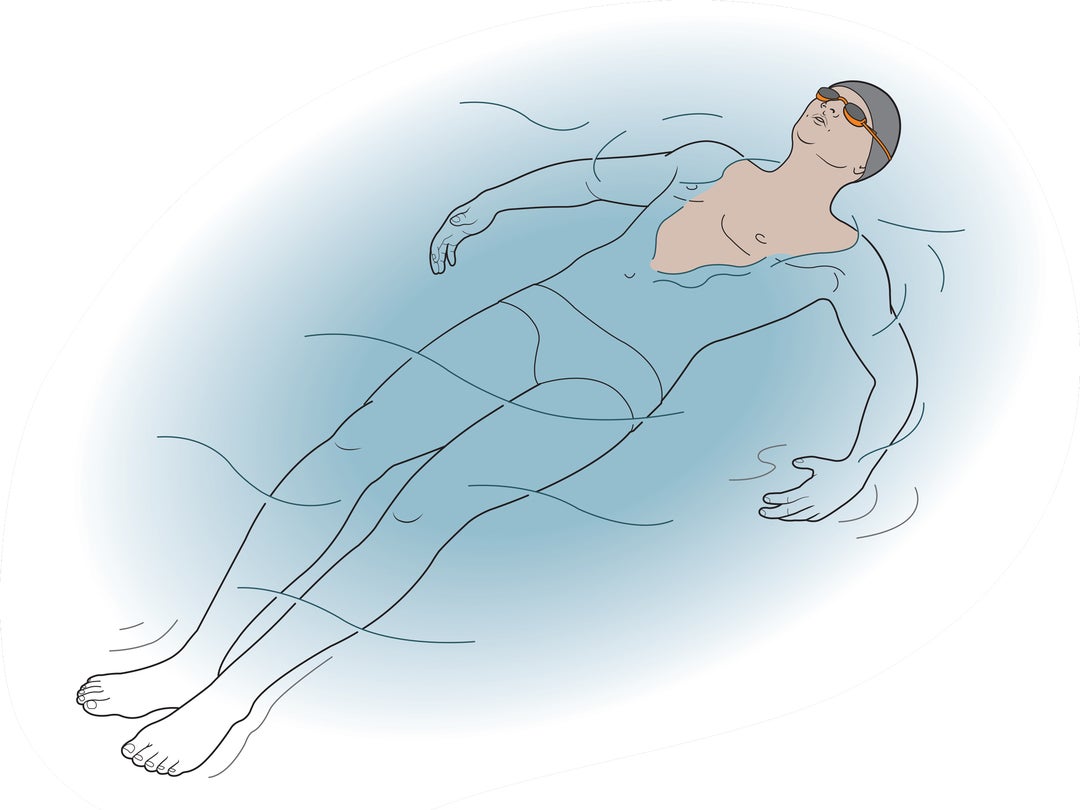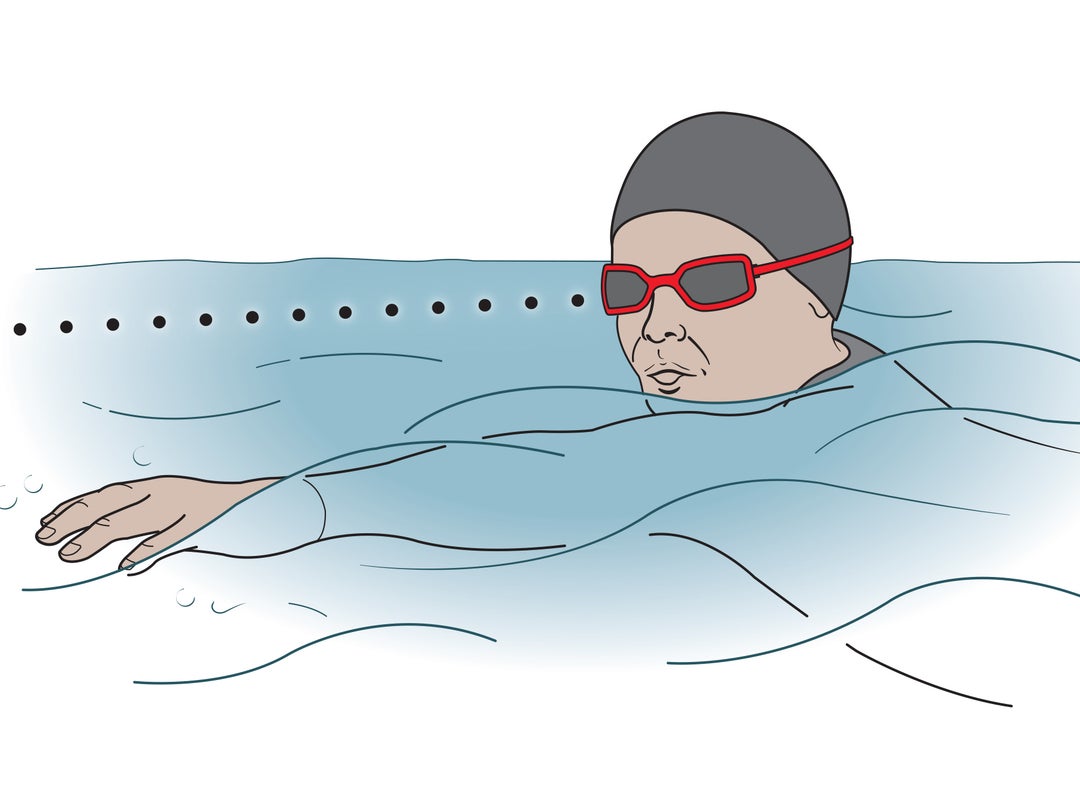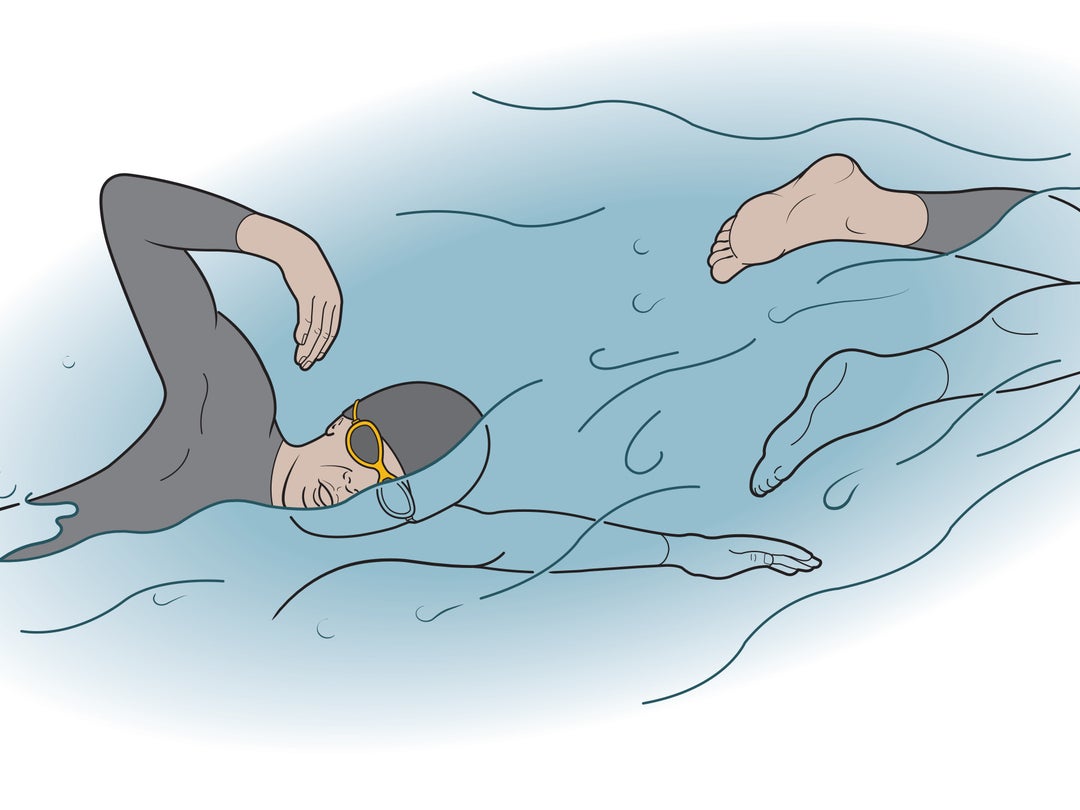New perk! Get after it with local recommendations just for you. Discover nearby events, routes out your door, and hidden gems when you sign up for the Local Running Drop.
Success in the swim leg of a triathlon depends on being proficient in a few open-water swim skills. These open-water swim skills—like treading water and sighting, for instance—prevent panic and provide you with confidence. Any coach will recommend that you train in the open water before your first event, but most skills can be practiced and perfected in the pool when open water is not accessible.
Open-Water Newbies
1. Open-Water Swim Skill: Treading & Floating

Three things are missing in the open water: the walls, the lane ropes, and the bottom of the pool. In open water, you are not guaranteed a solid object to hold onto for rest, so you need to feel calm and comfortable without those things if you need to take a break.
Keep your face out of the water with a back float. Start by breathing in through your mouth and out through your nose, and then lie back in the water. If necessary, use a gentle kick to keep your legs elevated. Keep your hands and arms in the water near your hips, and move them in a palms-down, back-and-forth sweeping motion called “sculling.”
Treading water uses your arms and legs under the water, keeping your body in a vertical position, with your head above the surface. Use a breaststroke or “eggbeater” kick with your legs, and use a sculling motion with your arms in the water. If you need to use either technique in a race, be sure to find some open space away from the crowd.
2. Open-Water Swim Skill: Sighting

Staying on course while surrounded by other swimmers is essential. “Sighting” is lifting your eyes out of the water while looking forward, seeing the next buoy on course, and continuing to swim in that direction.
Practice sighting every three to four breaths. Start in the pool by looking for a water bottle or coach on deck. Take a quick glance forward with just your eyes out of the water, turn your head to the side to take a breath, and then continue swimming—your entire face does not need to come up.
3. Open-Water Swim Skill: Pacing
Pacing in the water is just like a running race. Novice and uncomfortable swimmers should start at the back of the group. Allow the competitive swimmers to rush into the water when the horn blasts. Take plenty of time walking into the water and focus on relaxed breathing when you start swimming. Break the swim course into segments and take floating breaks along the way to mimic resting on the pool wall.
Practice your pacing in the pool with a swim that is 125 percent the length of your race. Try not to touch any of the walls, stand on the bottom, or hang on the lane ropes. Develop a way to rest (float on your back, sidestroke, breaststroke, etc) in the pool that will transfer to the open water.
Open-Water Veterans
1. Open-Water Swim Skill: Drafting

Riding someone’s slipstream is banned on the bike, but it’s completely legal in the water. Swimming behind someone, or drafting, can save up to 40 percent or your energy-expenditure. Learning how to stay in the sweet spot to gain the most advantage takes a bit of practice.
First, find a slightly faster swimmer and don’t let that athlete get away! Move into position directly behind the swimmer’s feet, giving just enough space that your hands are not touching the person’s toes with every stroke. Focus less on sighting the course buoys and more on where the person’s head is going. You can also follow the bubbles under water.
This is a great skill to practice in the pool with a friend or two. Choose a long distance (600-1000 yards) and alternate being the front swimmer and drafting swimmer every 100. The swimmer in the front of the line will always swim at a strong effort, allowing the following swimmers to practice staying in the efficient draft zone.
2. Open-Water Swim Skill: Stroke Tempo

All water conditions are not the same. Therefore, one stroke tempo is not sufficient for all open-water swims. Simply put, the choppier the water, the faster the stroke cadence. Wind, waves, and chop can suddenly halt your forward progress, catch your arm during the recovery phase, and give you a face-full of water while sighting or breathing. By taking more strokes in a shorter period, you can recover quicker from these adverse conditions. The opposite goes for calmer water, when longer strokes can be used with a slightly slower tempo.
Swim golf is a fun way to sample different stroke rates and effort levels while comparing time and effort. Use a set like 8 x 50 to find your lowest “score” (after each 50, add the number of strokes you took plus the number of seconds the 50 took). Experiment with fast and slow cadence to find your optimum efficiency.
Sara McLarty has been working with swimmers and triathletes in the waters of central Florida for over 10 years. Her specialty is teaching adults how to swim efficiently to accomplish all types of triathlon-related goals. With a background as a competitive swimmer and professional triathlete, she understands the how-to of going fast, but also how to successfully adapt technique to open-water conditions.
